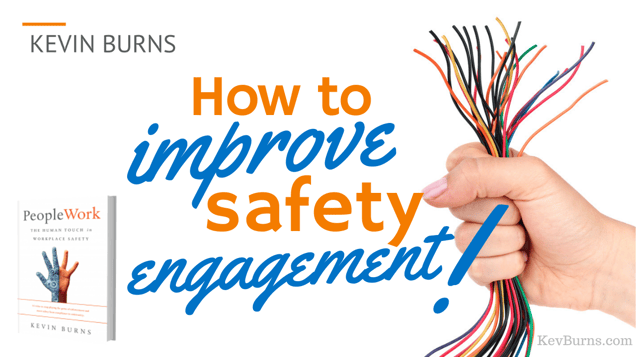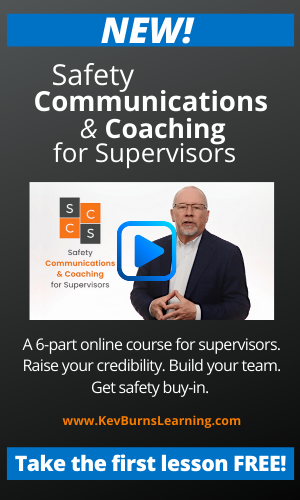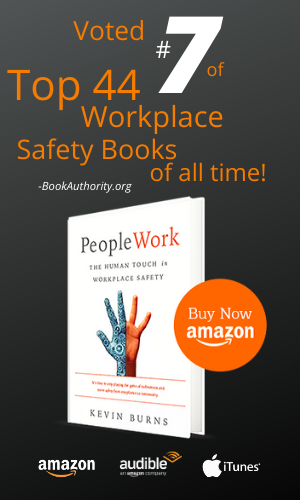How to Improve Safety Engagement
 Can you seriously call it “employee engagement” if the employee has little to do with it? Safety engagement needs to connect better.
Can you seriously call it “employee engagement” if the employee has little to do with it? Safety engagement needs to connect better.
In a survey of 362 companies by Bain & Company, 80% of CEO’s suggested that their companies offered a superior service experience. When customers were asked the same question, they answered only eight percent delivered superior service. 80% of companies think they’re doing well. Customers say only 8% of those same companies are. That's a serious disconnect.
So, it’s no surprise when companies simply shrug off stats and data that suggest that 7 out 10 employees are not actively engaged in their work. “It’s not us,” say most managers. Except it is.
So, how does this all relate to helping your people engage better in safety? Read on and watch the video below.
The data doesn’t lie.
The workplace engagement surveys tell us that our workplaces are fraught with high disengagement levels: that people are not connected to their work. When people are not connected to their work, there follows an increase in the level of inferior products and sub-standard service. Add to that lowered expectations in quality and an unwillingness to fix problems and you have a serious problem. Yet somehow, despite this, you’re expecting your people to embrace and engage in safety?
People not connected to their work are not connected to safely doing that work.

If people are not connected to their work, why would you think they would be connected to safely doing the work that they are not connected to? When people don’t care much about the job, they don’t care much about most everything about the job.
When people are connected to their work, they are more productive and have fewer quality defects. Not having to stop to fix your mistakes lifts production numbers.
If you'd like to improve your coaching ability to connect your people to their work, then take the Free Preview of the Safety Communications & Coaching for Supervisors course. 40-minutes of video instruction, summary sheet download PDFs and a companion MP3 audio version to take with you on the go. And it's free to get started.
The guy in the interview needs to show up.
When you were hired, there was something you did or said in the interview that gave your prospective employer cause to hire you. You stood out from the other candidates. You were the one who made the best impression. You said the right things.
Each member of your team was also chosen above others for the job. Each of them gave the impression that they were conscientious and were willing to give their best effort. That they were willing to follow the protocols and procedures and to contribute to a positive workplace. That they would care about the quality of their work and be a great team player. That’s the person who was hired.
When people are connected to their work, they are more productive and have fewer quality defects.
That’s also the person who can help fix the engagement problem. By doing just what they promised in the job interview. Personal effort is the one thing each individual employee controls.
Two parts to building engagement.
 It’s called employee engagement as though the lack of engagement is the employee’s fault. Oh sure, personal effort is certainly within the employees’ control, but engagement? Well, that is a team effort. From the middle-managers, to the front-line supervisors to the front-line staff, every person who interacts daily with a front-line employee contributes to engagement … or disengagement.
It’s called employee engagement as though the lack of engagement is the employee’s fault. Oh sure, personal effort is certainly within the employees’ control, but engagement? Well, that is a team effort. From the middle-managers, to the front-line supervisors to the front-line staff, every person who interacts daily with a front-line employee contributes to engagement … or disengagement.
But there are two parts to building engagement in the safety program. First, is to create great protocols, processes and procedures. Then, once that is in place, the hard work: convincing our people to follow them and to invest themselves in looking out for each other.
One is designed by engineering it. The other is facilitated by supervisory. And if the two aren’t on the same page, the disconnect occurs. Where there is disconnect, there is disengagement.
Connect your wires.
Employee engagement isn’t just how the employee feels about the job or the workplace. If they feel disconnected about where they work, they will disconnect from the processes, procedures and protocols. They will do enough to not get fired but not much more.
When employees are required to blindly follow the protocols that have been thrust upon them, they disconnect. People do not like to be tightly controlled. In fact, they disconnect quickly from anything in which they feel they have little autonomy.
People want to feel like they fit in at their workplace.
People want to feel like they fit in at their workplace. They want to be recognized by their peers as a valued member of the team. (They certainly do not want to feel like an outsider.) They want to be allowed to do a good job which means a little autonomy and some input to how we really do things ‘round here. They will take ownership of any protocols which they had a hand in creating.
They engage when you engage them.
Employees also want to be encouraged and recognized for their effort which is hard to accomplish when the protocols are tightly controlled, and they are expected to simply do without asking.
But the good news is that you can still build strong engagement with your people. They need to know that you, their supervisor, cares about who they are and the contribution they make. People will care about the job when they know that you care about their contribution. People will care about their safety when they know how much you care about them.
When you engage with them, they will engage with you, and the job, and safety processes, and in how they look out for the rest of the team. An employee’s level of engagement is directly proportional to the amount of engagement displayed by their immediate supervisor. Leaders must go first.
-- Take the FREE preview lesson of Kevin's course Safety Communications & Coaching for Supervisors. 40-minutes of video instruction, summary download PDFs and a companion audio MP3 version to take with you on the go. SCCS is an online course to help energize safety, build teamwork, and get employee buy-in.
Take the FREE preview lesson of Kevin's course Safety Communications & Coaching for Supervisors. 40-minutes of video instruction, summary download PDFs and a companion audio MP3 version to take with you on the go. SCCS is an online course to help energize safety, build teamwork, and get employee buy-in.
Kevin Burns, consultant/author, works with smart, caring companies to energize safety culture, build teamwork, and get employee buy-in.
KevBurns Learning is committed to to helping companies improve safety by improving people, through creative learning materials, virtual strategy sessions, safety meeting presentations, and team coaching programs.
In 2020, BookAuthority.org named PeopleWork #7 of The Top 44 Workplace Safety Books of All Time. Buy yourself a copy of PeopleWork: The Human Touch in Workplace Safety and give another as a gift to a colleague.
Subscribe to Kevin's YouTube channel.
Subscribe to Kevin’s Blog.


